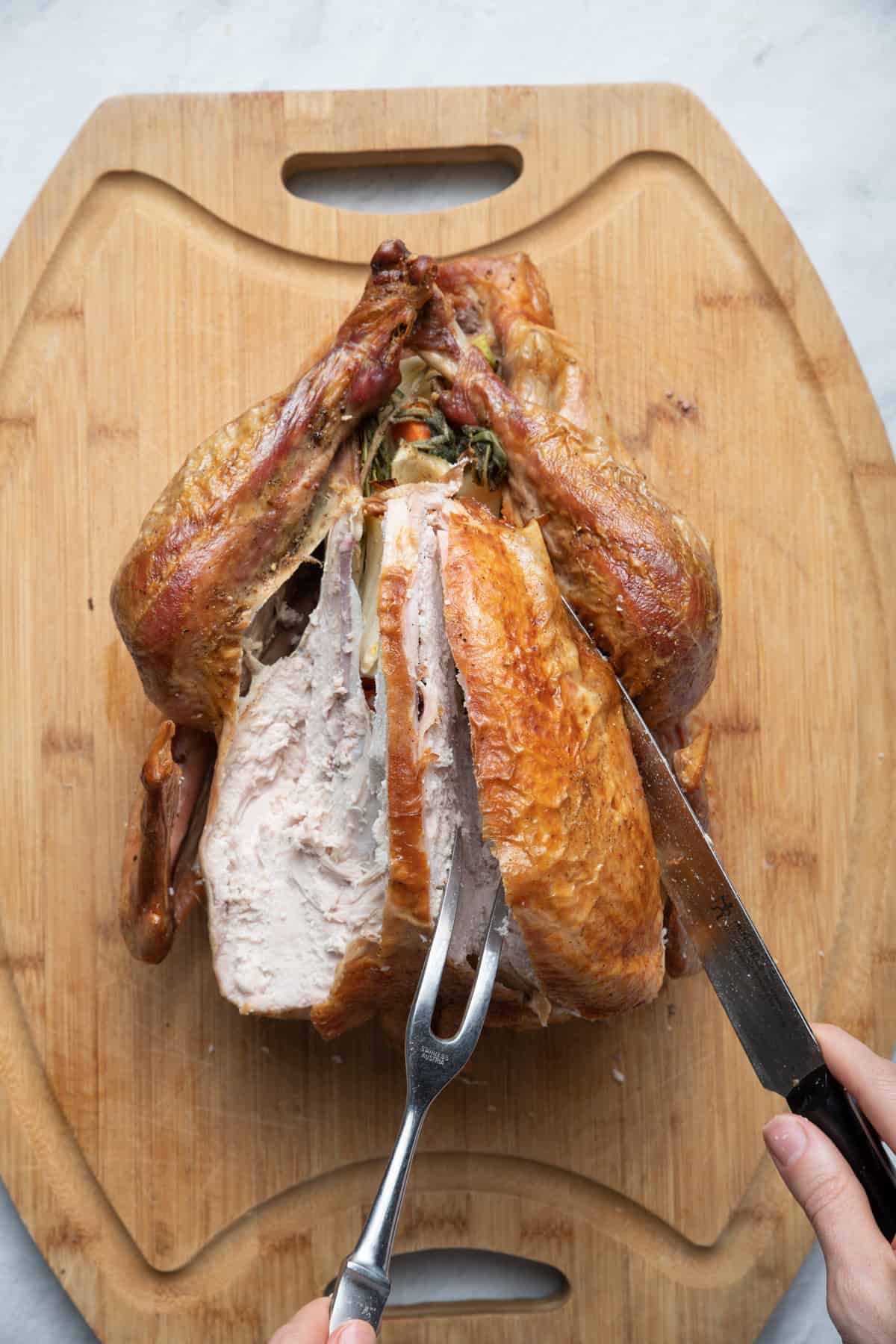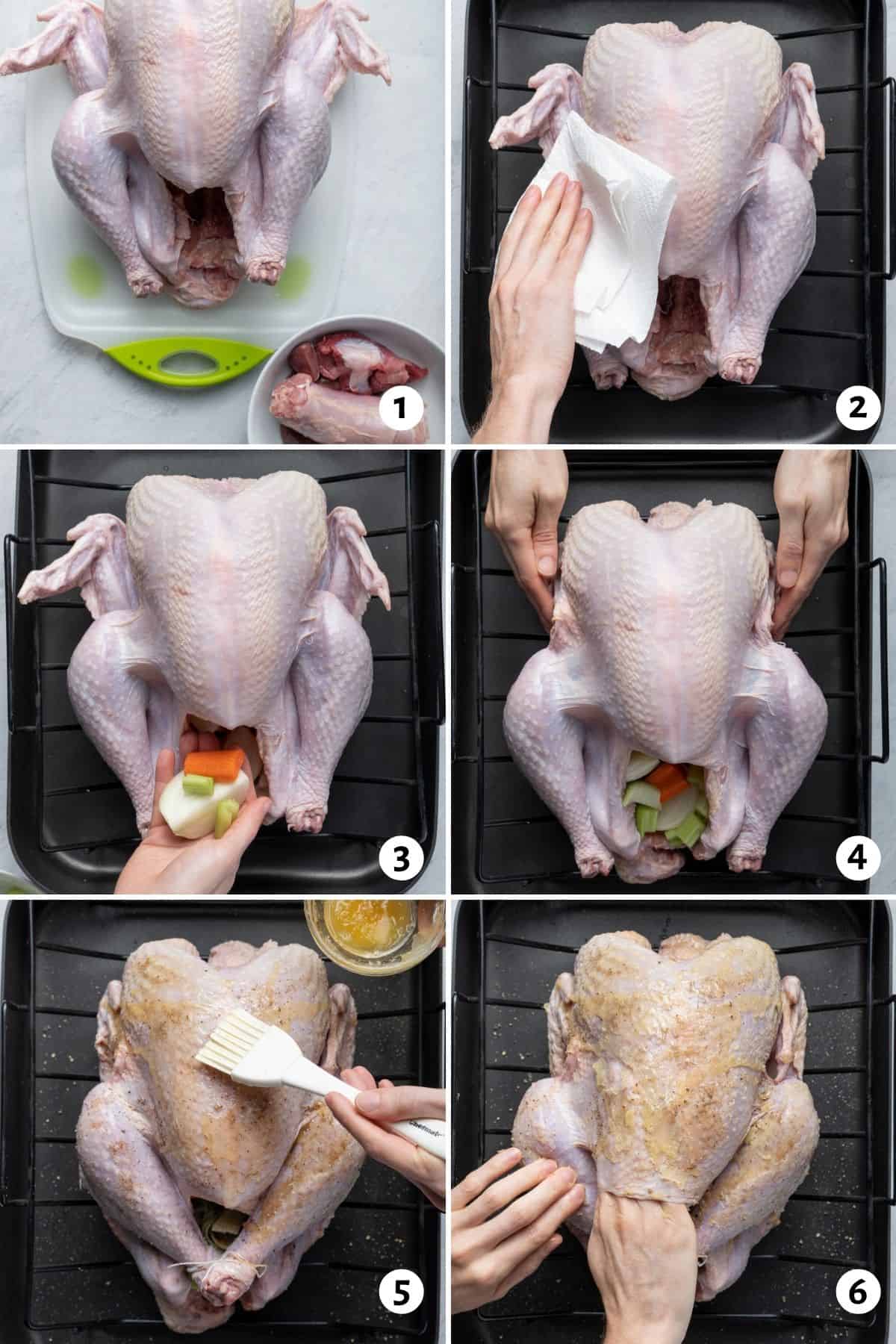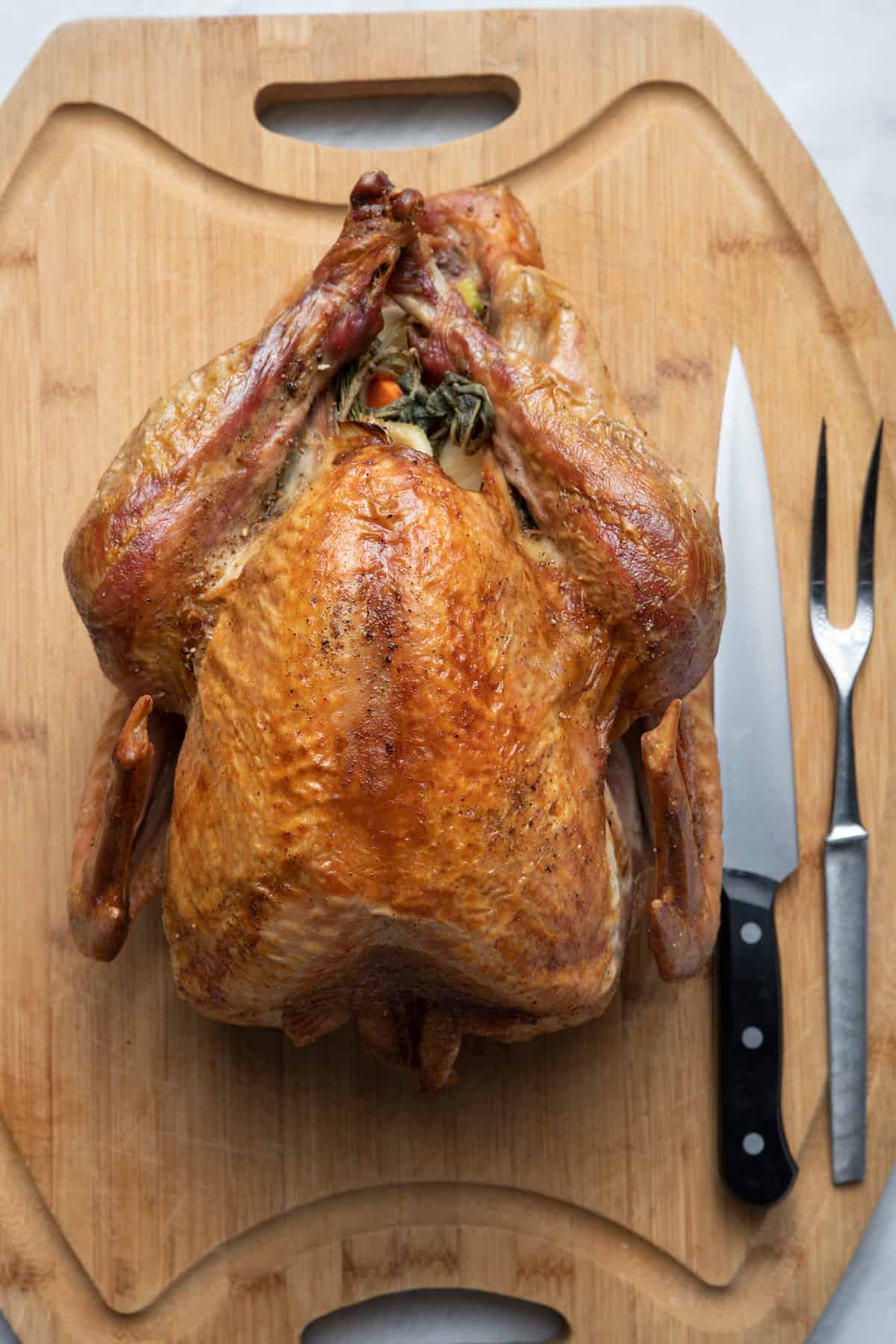Ah, Thanksgiving. A time for family, friends, and, of course, the centerpiece of the feast: the turkey But what to put in that cavity to infuse it with flavor and keep it moist? While stuffing is a classic option, there are plenty of other delicious and creative choices to explore.
Let’s delve into the world of turkey cavity stuffings, exploring options beyond the traditional bread-based stuffing:
1. Aromatics and Herbs:
- Onions, carrots, and celery: This trio is a classic for a reason. They add sweetness, earthiness, and a touch of savory depth to the turkey. You can also experiment with other vegetables like parsnips, fennel, or even apples for a touch of sweetness.
- Fresh herbs: Rosemary, thyme, sage, and bay leaves are all excellent choices. They release their fragrant oils as they cook, infusing the turkey with their unique aromas.
- Citrus: A few orange or lemon wedges add a bright, citrusy note that cuts through the richness of the turkey.
- Garlic: A few cloves of garlic, either whole or minced, add a warm, pungent flavor that complements the turkey beautifully.
2. Fruits and Vegetables:
- Apples: Sliced apples add sweetness and moisture to the turkey. Choose firm varieties like Granny Smith or Honeycrisp.
- Pears: Pears offer a similar sweetness and moisture to apples, with a slightly more delicate flavor.
- Citrus fruits: Oranges, lemons, and grapefruits add a bright, tangy flavor to the turkey. Be sure to remove the peel before stuffing them in the cavity.
- Root vegetables: Carrots, parsnips, and potatoes add sweetness and earthiness to the turkey. Cut them into large chunks to prevent them from burning.
3 Spices and Seasonings:
- Salt and pepper: These are essential for seasoning the turkey and drawing out its natural flavors.
- Black peppercorns: Whole black peppercorns add a subtle peppery bite to the turkey.
- Garlic powder and onion powder: These add a concentrated dose of garlic and onion flavor without the bulk of fresh vegetables.
- Dried herbs: Dried thyme, rosemary, sage, and oregano are all good choices for adding depth of flavor to the turkey.
- Spices: Experiment with spices like cumin, coriander, paprika, or even a touch of cayenne pepper for a kick.
4. Other Flavorful Additions:
- Butter: A few tablespoons of butter rubbed under the skin of the turkey will help it brown beautifully and stay moist.
- Olive oil: Olive oil is a healthier alternative to butter and adds a subtle fruity flavor to the turkey.
- Wine: A splash of white wine or dry sherry adds a complex flavor to the turkey.
- Broth: Chicken or vegetable broth adds moisture to the turkey and helps create a flavorful pan sauce.
5. Creative Stuffings:
- Wild rice stuffing: This nutty, flavorful stuffing is a delicious alternative to traditional bread stuffing.
- Quinoa stuffing: Quinoa is a healthy and gluten-free option that adds a nutty flavor and a satisfying texture to the stuffing.
- Mushroom stuffing: This savory stuffing is perfect for mushroom lovers. Use a variety of mushrooms for added depth of flavor.
- Sausage stuffing: Add some Italian sausage to your stuffing for a hearty and flavorful twist.
Tips for Choosing Your Turkey Cavity Stuffing:
- Consider the overall flavor profile of your meal. Do you want something classic and comforting, or something more adventurous?
- Think about the moisture content of your stuffing. If you’re using dry ingredients like bread crumbs, be sure to add some moisture with broth or butter.
- Don’t overstuff the cavity. This can prevent the turkey from cooking evenly.
- Make sure the stuffing reaches an internal temperature of 165°F before serving.
No matter what you choose to put in your turkey cavity, remember to cook it to a safe internal temperature of 165°F. With a little creativity, you can create a flavorful and delicious turkey that will be the star of your Thanksgiving feast.
Bonus Tip: Save the drippings from the roasting pan to make a delicious gravy. Simply whisk in some flour or cornstarch to thicken, and season to taste.
Happy Thanksgiving!
Carving Your Turkey: A Step-by-Step Guide
- Cutting: Hold the turkey so that its neck end is closest to you. First, make a horizontal incision above the wing joint at the base of the breast and cut all the way through to the bone.
- To remove the breasts, run a knife along the breastplate’s outline and move it down each side of the rib cage in the direction of the wing joint. As you cut, carefully pull the breast meat away to enable a clean separation.
- Leg Detachment: Press down on the drumsticks until they snap outward, exposing the joint. With ease, cut through the joint to free the legs from the body.
- Wing Separation: To separate the wings from the body, locate the skin that connects the wings and cut it gently.
- Breast Slicing: Place the skin-side up breast meat on a chopping board. For maximum tenderness, cut it into even slices against the grain and arrange them on your serving dish.
- Thigh and Drumstick Division: To identify the joint seam, turn the thigh and drumstick combination skin-side down. To separate the thigh from the drumstick, cut through this seam. To remove the thigh bone and preserve the delicious thigh meat, trim along its length.
- Thigh Slicing: Using the same against-the-grain technique to create a more textural effect, slice the thigh meat on the cutting board and transfer the slices to your serving dish. Position the drumsticks next to the slices.
- Wing Jointing: Locate the joint joining the drumette and wingtip. Cut through this joint to release the two sections, then incorporate them into your serving configuration.
- Final Trimmings: Check the turkey carcass for any leftover meat, paying close attention to any crevices. To guarantee that nothing goes to waste, cut off these pieces and place them on your platter.

How to make a whole turkey for Thanksgiving
- First, remove the neck and giblets from inside the turkey. Instead of throwing these out, keep them in the refrigerator or freezer to use later to make broth or gravy. The turkey doesn’t need to be rinsed, brined, or anything else.
- Secondly, pat dry the turkey with a paper towel to absorb any remaining moisture. This makes the skin crispier after roasting and helps the herbed butter stick to the skin more effectively.
- Third, insert the celery, onions, and carrots into the turkey’s crevice. This creates so much flavor within the turkey. You can leave them whole or chop them up roughly. If you’d like, you can also stuff a few lemon wedges.
- Fourth, tuck the wings of the turkey underneath the bird. By doing this, you can avoid them burning in the oven before the turkey is cooked through and sticking out higher than the rest of the turkey. At this point, tie the legs together with dental floss or twine to ensure they stay in place and the vegetables inside the crack don’t roast out. Additionally, it cooks more evenly and prevents it from becoming uneven in the oven.
- Fifth, it’s time to season and flavor the turkey. Sprinkle the turkey liberally with salt and pepper, being sure to get under and around the bird. Then, in a pan over medium heat, melt the butter and cook the herbs until fragrant and soft. It is recommended to coat the turkey with butter and insert the herbs inside.
- Lastly, rub the herbed butter all over the turkey with your hands, both inside and out. This is how to get the turkey to have the ideal golden crust. Make sure to massage the herbed butter underneath and raise a portion of the skin above the breast.

Now it’s time to cook it in the preheated oven. As a general rule, allow 15 minutes for every pound gained, but make sure to check again by placing a thermometer in the middle of the thighs. It should register at 170ºF or 175ºF degrees.
Take the turkey out of the oven and let it rest at room temperature until the thermometer registers doneness. You’ll want to let the turkey rest for 15-30 minutes before carving into it. This helps to ensure it stays juicy, so don’t skip this step.
Remove the turkey and place it on a serving tray or cutting board if you plan to use the drippings to make gravy—especially if you plan to carve it before serving. Otherwise it can rest on the roasting pan.

Now that you’ve cooked an amazing turkey you’ll need to carve it. For many people, carving is scarier than the actual cooking process, but it shouldn’t be! Check out my comprehensive post here for complete illustrations and directions on how to carve a turkey.
How to Cook a Turkey
FAQ
What to stuff inside turkey for flavor?
How can I add flavor to my turkey?
How do you season a turkey cavity?
How do you make turkey not taste bland?
